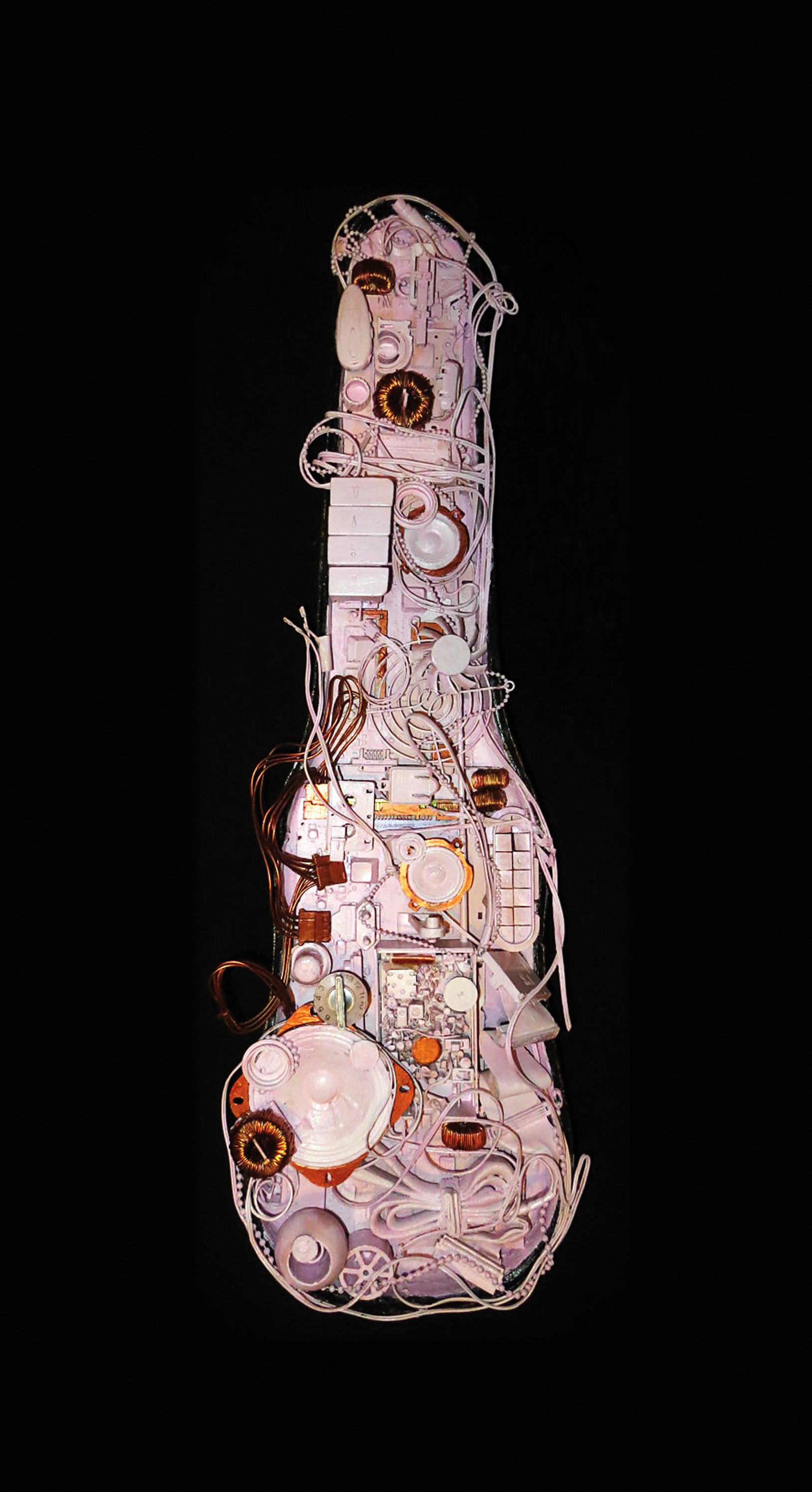Once there was an audio software company – now also making studio furniture – that decided to develop a coaxial monitor with a Barefoot wizard named Thomas. If you’re going to make fun of people for dreaming, let me stop you right there: Output’s virtual instruments and effects rule, everyone I know (me included) wants to own a Platform desk with a matching, super-innovative Sidecar rack for their project studio, and if you don’t know about Barefoot Sound’s monitors, you just aren’t paying attention.
I’ve been tracking with Barefoot MicroMains [Tape Op #58] at Sharkbite Studios in Oakland, CA, for over two years before the pandemic hit. Though the Barefoot MicroMains took a while for me to warm up to, they’ve unequivocally earned my trust. For fans of Thomas’ designs (of which there are many), Output’s Frontier monitors may look unfamiliar, but the signature Barefoot accuracy in sound reproduction is spot on. Much like Output’s studio furniture style, the Frontier’s enclosure is simple, elegant, and modern, featuring a slate gray composite top and solid walnut base – no visible logos, front panel controls, or doodads will distract you at the listening position. A simple dim glowing aura appears between the base and main chassis when the monitors are powered on.
The face features a good-sized round port below the 6.5/1.25-inch time aligned coaxial alloy drivers. Output chose to highlight Thomas Barefoot’s involvement in the Frontier’s design rather than focus on promoting the fact that these monitors are coaxials – I wasn’t even thinking “coaxial” until after I positioned the monitors in my project studio and sat down to mix. “Huh? Where’d the tweeters go?” Perhaps that’s intentional? Don’t get caught up in configuration, specs, and features – just listen. Sound singing from dual-concentric, time-aligned (see Ed Long) loudspeakers can be stunning, in the sense that the crossover (3 kHz) is not as overtly audible with less intermodal distortion. The entire frequency spectrum (45 Hz to 25 kHz per Output’s specs) seems super evenly dispersed from the same direction. According to specs – and my ears – it’s frigging flat, yet not boring at all.
Immediately with the Frontiers, localization of panned sources within the stereo field rendered naturally but became more obvious and lifelike than with my standard 2-way driver configuration nearfields. The Frontiers definitely have a wider mixing sweet spot than an average monitor with dome tweeters. If you’re using a monitor with a ribbon transducer (e.g., ADAM Audio) or inverted dome tweeters (Focal), you may notice a slight narrowing in comparison, but it was a welcome improvement for my space (and ears). Also, the phantom center felt more solid – the kick drum, bass guitar, and lead vocal were sitting right on my forehead where I wanted them. That change was so immediate (in a good way), I had to check phase on everything to verify what I was hearing.
Rear panel controls include a stepped Level rotary knob and an Eco Mode power draw switch that enables sleep functionality for lowered energy consumption. Connection via +4 dBu XLR/TRS combination jacks and consumer level RCA inputs are provided. An IEC connector provides power hookup to an auto-switching (according to region) supply, activated via standard toggle with a fuse. With ample juice (100 Watts per driver), the Frontier never seemed to break up and felt even at variable volumes. Note that there is no filter boost or cut adjustments provided on this monitor. Placement suggestion is fairly straightforward and detailed in the User Guide’s Setup section. Small isolation pads are provided for desktop positioning, but I recommend further decoupling monitors from surfaces with the use of larger isolation pads like Radial’s Recoil Stabilizers [#62] or Auralex’s MoPADs [#30] – I used my IsoAcoustics Isolation Stands. I love the included felt monitor socks. All manufacturers should provide these (or at least offer them for a small price)!
After a standard break-in period, I didn’t switch on my trusted monitors for over a week – or my Auratone 5C Super Sound Cubes [#111] – to check my mixes. Out of the box, the Frontiers were “one and done” for my ears. To be clear, the client revision world we now live in means that rarely ever is a mix finished in the first round. But I was confident with initial results, which referenced beautifully on other systems. Typically I pair a subwoofer with my 6.5-inch nearfields. Without a sub, however, the Frontiers performed surprisingly well for their speaker size and form factor. Comparisons can be elusive and highly subjective, but I’ve tested/reviewed several similar-sized non-coaxial monitors in my project studio and can’t remember hearing a tighter, more focused, and accurate bass response. I’m impressed with the Frontiers. They seem to have it all: value, style, and (most importantly) performance.




_disp_horizontal_bw.jpg)